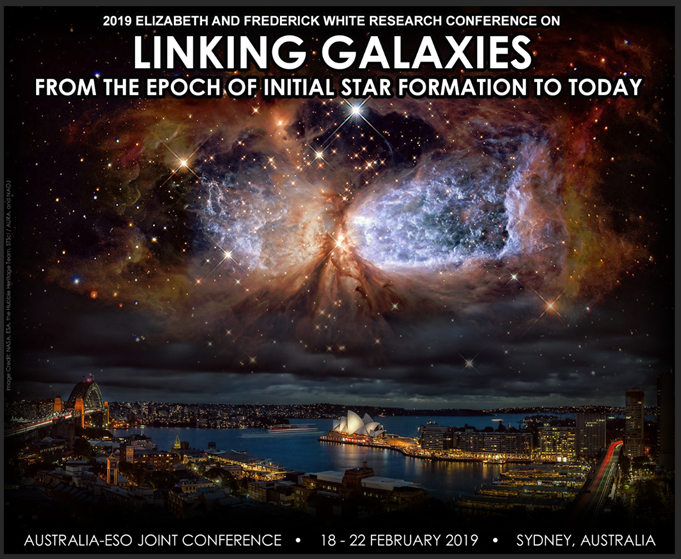
Over the last two decades, the surveys mapping the Universe have made clear that star-formation activity peaks about 10 billion years ago (known as ‘cosmic noon’). The driver of this behaviour is still an open area of research. A better understanding of star-forming regions and physical processes is required to explain its rise and fall around ‘cosmic noon’. With existing observational resources, we are able to resolve many detailed questions about the physical processes driving galaxy formation and evolution, including:
Cosmological simulations (Illustris, EAGLE, FIRE) indicate that the ISM and its constituents are important to understand galaxy formation but are poorly constrained. The discrepancy between observations and simulations is because the roles and physics of the above-mentioned processes are not well understood.
This conference will focus on:

With the generous support of the late Lady White MBBS and the late Sir Frederick White FAA FRS, the Academy has established a series of research conferences in the physical and mathematical sciences related to the solid Earth, the terrestrial oceans, Earth's atmosphere, solar-terrestrial science, space sciences and astronomy.
The purpose of the conferences is to advance at the most fundamental level of the understanding of the subject, to introduce to Australian research new aspects or directions, and to encourage participation of overseas scientists.
One conference is funded annually. Conferences are usually of about two days duration. A sum of up to $10,000 is provided. The supplementation of this sum is encouraged.
More information on the Elizabeth and Frederick white research conference award
© 2025 Australian Academy of Science